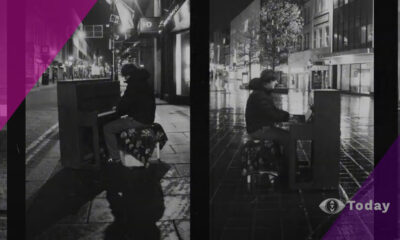Never has a dinner plate caused such excitement, as the one coming up for auction at Dreweatts on June 27th…
The plate, which dates from 1774, is from the most important dinner service ever made by the famous ceramics company Wedgwood. Called the ‘Frog Service’ it was created for the Empress Catherine the Great of Russia (1729-1796).
The service comprised of 50 settings, with a total of 944 pieces – 680 dinner plates and 264 dessert plates. The Empress requested the hand-painted decoration on the plates to depict British scenes as she had a huge appreciation of Britain. Geoffrey Stafford Charles, from Dreweatts British & European Ceramics & Glass department, said: “The commission of the Wedgwood ‘Frog service’ was an important display of affection for the British way of life and an affirmation of political links between the two countries. The Empress also used the power of ceramics as a way to display wealth and build her own image both at home in Russia and overseas.”
These scenes were derived from prints, which culminated in 1,222 views. Some pieces were decorated with English landscape views, with 17 gardens by the English gardener and landscape architect, Capability Brown (1715-1716) portrayed.
Others showed new industrial buildings that were appearing in Britain during the Industrial Revolution. Some showed great British country houses and their landscaped gardens, other showed gothic ruins and areas of natural beauty. Many of the buildings were those of important clients of Wedgwood and even the home of Wedgwood founder Josiah Wedgwood (1730-1795), Etruria Hall in Stoke-on-Trent in Staffordshire, was depicted on a serving dish. As a result the ‘Frog service’ serves as one of the finest surviving pictorial records of eighteenth-century Britain.
The Empress also requested a green frog symbol within a shield, which alluded to the name of the palace the service was created for, which was the Chesme Palace. The palace was situated in an area five miles outside St Petersburg known as the ‘frog marsh’ (Kekerekeksinsky), hence the frog association. The service was planned for use in the palace, which was built as a stopover location, to break up the journey between St Petersburg and the Royal’s summer palace at Tsarskoe Selo.
The image on the plate in the sale is an example of one of the many industrial scenes illustrated. It is taken from A view of Dunnington Cliff on the River Trent, by F Vivarès, published in 1745 (after a painting by Thomas Smith of Derby). Another, wider view of the same lock is shown on a large oval dish still in the collection at The Hermitage in St. Petersburg.
In enlightened eighteenth-century Britain, industrial edifices, such as locks, were considered to enhance natural beauty, adding interest and importance to the landscape. At the time, King’s Mills was the largest water-powered site in the country with four mills, where processes such as paper-making took place. The whole site sadly burnt down in 1927.
The plate is from The Stanley F Goldfein Collection, a collection being sold by Dreweatts in Association with Christie’s over two separate sales (separate press release available, if of interest). The plate will go under the hammer at Dreweatts on June 27, 2024 and carries an estimate of £8,000-£12,000 (lot 1047).
www.dreweatts.com











